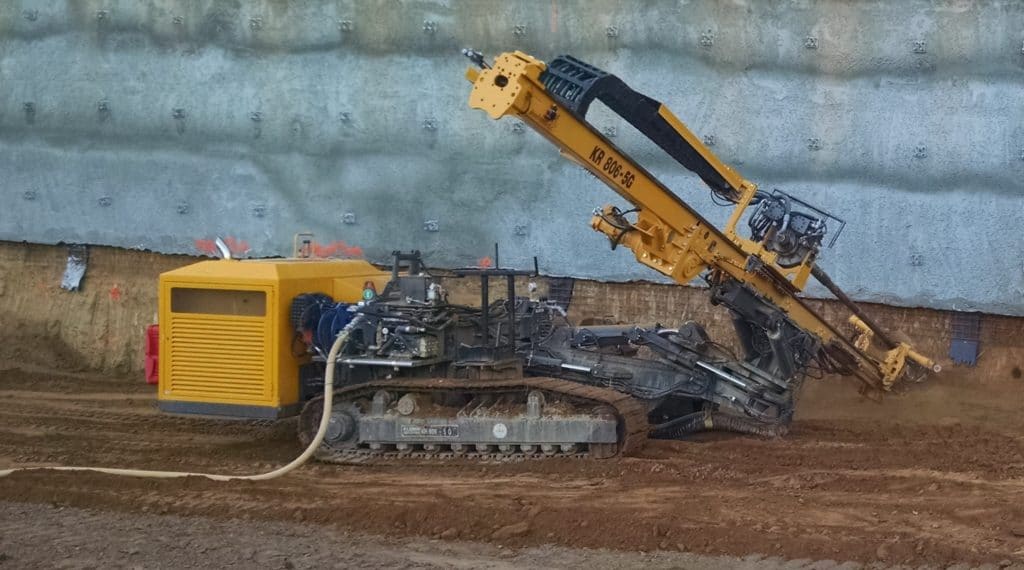What are the advantages of a soil nail wall?
Speed and Cost
Soil nail walls are installed more quickly and cost effectively than other shoring systems. Soldier pile walls or sheet pile walls require large equipment to drill in place or drive the piles or sheets. Soil nails avoid the time and cost of installing these vertical elements. The material cost of soil nail walls is less than that of anchored soldier piles with wood lagging and substantially less than that of sheet pile walls. Driven soil nail walls are even faster, with installation times reduced by 50%.

Encountering Rock
Soil nail walls are an excellent alternative when soil overlies hard material or rock. Often, below grade excavations for basements or underground parking extend to or into rock. Rock at the bottom of shoring elevation precludes the use of sheet piles as the sheets cannot be driven into the rock. Soldier pile walls will work in in this situation, but the piles must be drilled below the bottom of shoring and toed into the rock. Soil nail walls can be installed in the soil and into the rock should the excavation extend into rock. The small diameter drilling required for soil nails is more easily done than the large diameter drilling required for soldier piles.

Wide Variety of Face Options
A wide variety of facings can be used on soil nail walls. Permanent walls can have a finished shotcrete face or any veneer such as brick, stone, or modular blocks. Many sites required a mix of “top-down” retaining walls such as a soil nail wall and “bottom-up” retaining walls such as segmental block walls or cast concrete retaining walls. Since multiple veneers are possible on soil nail walls, the soil nail wall can match the other site walls. In particular, the finished shotcrete face can act as the permanent face of the soil nail wall, saving in the cost of shotcrete. We really like architectural shotcrete finishes on permanent soil nail walls such as those constructed by BoulderScape.

Ideal Soil Conditions in our Region
Soil nails work well in the piedmont residual soils found in our region of Virginia, North Carolina, South Carolina, Tennessee and Georgia. Because soil nail walls are constructed in 5′ lifts, the soil must have sufficient apparent cohesion to stand for 24 to 36 hours while the nails are drilled and the shotcrete is applied. With good geotechnical data and thoughtful design, unsaturated soil mechanics can be used to optimize the soil nail design.
